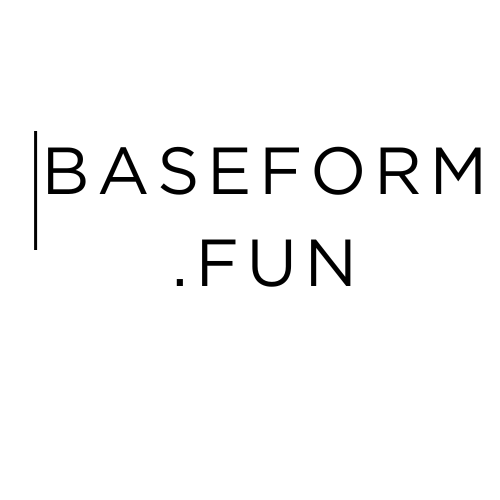Web development is one of the most in-demand skills in the technology industry today. Every business, whether small or large, needs a website to reach its audience, and many of these websites are built by web developers. If you’re thinking about getting into web development, you’re making a smart choice. But where should you start, and what tools do you need to learn? In this article, we’ll break down everything you need to know to get started in web development.
What is Web Development?
Web development refers to the process of creating and maintaining websites. It includes everything from designing the site to writing code that makes it function. There are two main types of web development:
- Front-End Development: Front-end developers are responsible for the parts of the website that users interact with. This includes the layout, design, and interactivity of the site. The goal is to create a seamless and engaging user experience.
- Back-End Development: Back-end developers work on the server-side of the website. They manage databases, servers, and application logic to ensure everything runs smoothly. The back end is the part of the website that users don’t see but is critical for functionality.
Some developers specialize in one area (front-end or back-end), while others are full-stack developers who handle both.
1. Learn the Core Technologies of Web Development
Before you dive into the world of web development, it’s important to get familiar with the core technologies that form the foundation of web development. These include HTML, CSS, and JavaScript.
- HTML (HyperText Markup Language): HTML is the structure of web pages. It defines elements such as headings, paragraphs, links, images, and forms. Every website you visit is built using HTML, and as a web developer, you need to know how to create and organize these elements.
- CSS (Cascading Style Sheets): While HTML creates the structure of a webpage, CSS is used to style it. With CSS, you can control colors, fonts, spacing, and layout. It’s what makes a webpage look visually appealing and user-friendly.
- JavaScript: JavaScript is the programming language that adds interactivity to web pages. It can be used to create animations, handle user input, and even make API requests to fetch or send data. If you want to create dynamic websites, learning JavaScript is a must.
Once you’re familiar with HTML, CSS, and JavaScript, you’ll have the foundation to start building your first web pages and applications.
2. Choose a Framework
While it’s important to understand the core languages, learning a framework will allow you to build websites and web applications more quickly and efficiently. Frameworks are collections of pre-written code that streamline the development process.
For front-end development, popular frameworks include:
- React: A JavaScript library for building user interfaces. React makes it easier to build dynamic and interactive web applications.
- Vue.js: A progressive JavaScript framework that is simple to integrate into existing projects. Vue.js is often praised for its gentle learning curve.
- Angular: A comprehensive framework that provides everything you need to build robust single-page applications (SPAs). Angular is widely used in enterprise-level applications.
For back-end development, popular frameworks include:
- Node.js: A JavaScript runtime environment that allows you to use JavaScript on the server side. It’s built on Chrome’s V8 engine and allows for fast, scalable applications.
- Django (Python): A high-level Python framework that promotes rapid development and clean, pragmatic design. Django is often used for building data-driven websites.
- Ruby on Rails: A framework built with the Ruby programming language, designed to make it easier to develop web applications by emphasizing convention over configuration.
3. Set Up Your Development Environment
To start coding, you’ll need a development environment on your computer. Here are the tools and software you’ll need:
- Text Editor: A text editor is where you’ll write your code. Popular choices include VS Code, Sublime Text, and Atom.
- Web Browser: You’ll need a web browser to preview your code and see your website in action. Google Chrome and Firefox are excellent choices for web developers.
- Version Control (Git): Git is a version control system that allows you to track changes in your code and collaborate with others. GitHub and GitLab are popular platforms for hosting Git repositories.
- Local Server (Optional): If you’re building a dynamic website with back-end functionality, you may need to set up a local server on your computer. Tools like XAMPP and WAMP can help you run a server on your computer for testing purposes.
4. Build Your First Website
Once you’ve learned the basics of HTML, CSS, and JavaScript, it’s time to build your first website! Start small by creating a simple static website. This will give you a chance to practice writing HTML and styling it with CSS.
Here’s a simple structure for a beginner’s website:
- Homepage: A landing page with a welcome message, some basic text, and maybe an image or two.
- About Page: A page where you can introduce yourself or your business.
- Contact Page: A page with a form for users to reach out to you.
As you build your site, you’ll get a feel for how the technologies work together, and you’ll start building confidence in your skills.
5. Keep Practicing and Learning
Web development is an ever-evolving field, so it’s important to keep learning and practicing. As new tools, technologies, and frameworks emerge, it’s essential to stay up to date.
Here are some ways to continue your learning journey:
- Build Projects: The best way to learn is by doing. Start building your own projects, whether it’s a personal portfolio site, a blog, or a small business website.
- Contribute to Open Source: Contributing to open-source projects is a great way to gain experience, collaborate with others, and improve your skills.
- Join Communities: Participate in online forums, attend meetups, or join coding bootcamps to connect with other developers and learn from their experiences.
Conclusion: Start Your Web Development Journey Today
Web development is an exciting and rewarding career path, and it all starts with learning the fundamentals. Whether you’re looking to build websites for clients, develop web applications, or work with cutting-edge technologies like artificial intelligence, web development provides endless opportunities for growth and success.
At baseform.fun, we offer comprehensive courses that will help you master web development, from the basics to advanced techniques. Start your journey today and join the thriving community of web developers!

